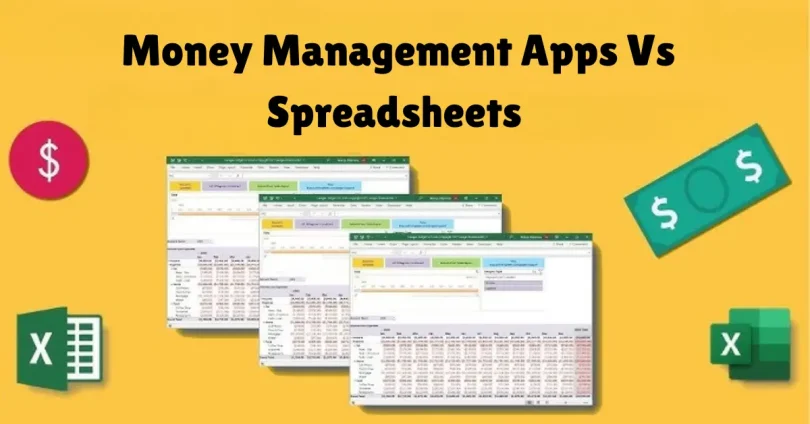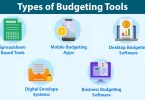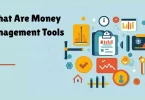Managing your money wisely can be one of the most empowering steps toward financial well-being. A well-planned budget doesn’t just help you pay bills on time—it gives you control over your financial future, reduces stress, and allows you to save for goals like buying a home, traveling, or building an emergency fund. For instance, imagine Ali, who wants to save for a new car while managing monthly rent and other expenses. Without a proper budgeting system, he might struggle to keep track of where his money is going.
If you’re wondering how to get started, the debate often comes down to money management apps vs spreadsheets. Each option has its advantages and drawbacks, and the best choice depends on your lifestyle, tech comfort level, and financial habits. In this guide, we’ll explore both options in detail so you can make an informed decision that fits your needs.
What Are Money Management Apps?
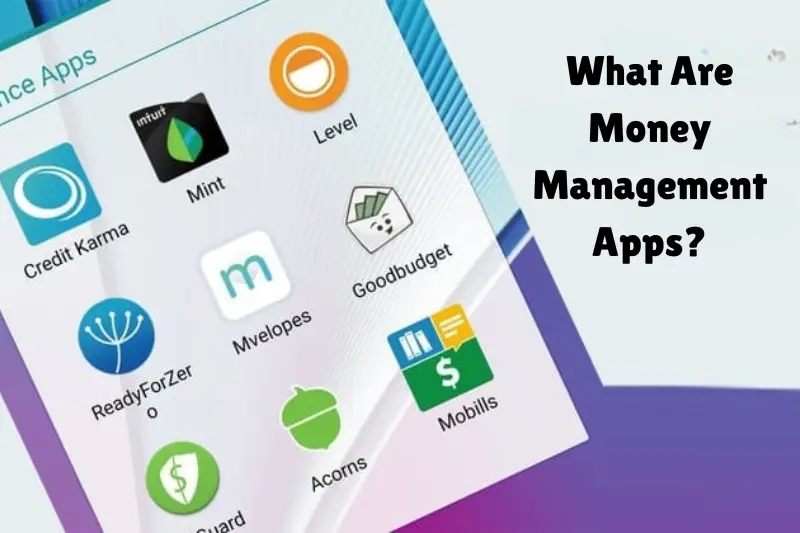
Money management apps are software tools—often mobile and web-based—designed to simplify the process of tracking, analyzing, and planning your finances. They are built to help you see the big picture of your financial life without spending hours manually entering numbers.
Popular apps include:
- Mint: Automatically tracks bank transactions, categorizes spending, and gives financial tips.
- YNAB (You Need a Budget): Focuses on zero-based budgeting to help you give every dollar a purpose.
- PocketGuard: Shows how much money you can safely spend after bills and savings.
- Personal Capital: Offers both budgeting tools and investment tracking for a holistic financial view.
Advantages of Money Management Apps
- Automation Saves Time
Manually entering every expense can be tedious. Money management apps link to your bank accounts and credit cards, automatically importing transactions and categorizing them for you. For example, your coffee purchase at a café is automatically tracked under “Dining Out.” - Visual Insights Help You Understand Spending
Charts, graphs, and dashboards make it easy to see where your money goes each month. You can quickly spot areas where you’re overspending or identify patterns to adjust your budget. - Reminders and Alerts Keep You on Track
Apps often send notifications when bills are due, or if you’re approaching limits in certain categories, helping you avoid late fees and overspending. - Goal Tracking Motivates You to Save
Whether it’s building an emergency fund or saving for a vacation, apps allow you to set financial goals and monitor progress in real time. - Accessibility and Convenience
Most apps are mobile-friendly, letting you check your finances anywhere, anytime. This can be especially useful for people who travel frequently or like to make quick financial decisions on the go.
What About Spreadsheets?
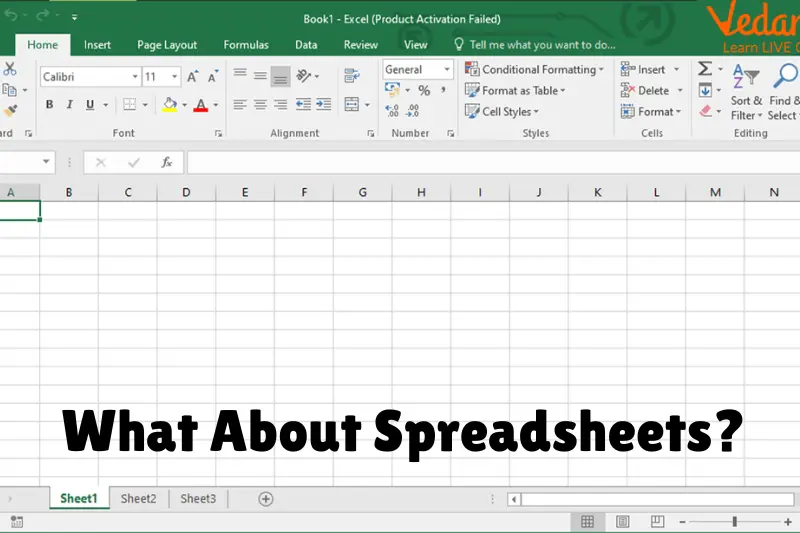
Spreadsheets, such as Microsoft Excel or Google Sheets, have been a reliable method for managing finances long before apps became popular. They are highly customizable tools that allow you to structure your budget exactly how you want.
Advantages of Spreadsheets
- Full Customization
Spreadsheets give you complete control over how you track your income, expenses, and savings. You can create personalized categories, add unique formulas, and build detailed reports tailored to your needs. - Privacy and Data Security
Unlike apps that connect to banks or store data online, spreadsheets can be kept entirely offline. This eliminates the risk of your financial data being accessed by third parties. - No Recurring Costs
Once you have spreadsheet software, you don’t need to pay a monthly subscription fee. Google Sheets, for example, is free and cloud-based, allowing for easy access without extra costs. - Flexibility for Complex Calculations
If you want to forecast long-term expenses, calculate loan interest, or create multiple budget scenarios, spreadsheets allow complex calculations that some apps may not support.
Money Management Apps vs Spreadsheets: A Detailed Comparison
| Feature | Money Management Apps | Spreadsheets |
| Ease of Use | Easy, automated, beginner-friendly | Manual setup required; learning curve for formulas |
| Customization | Limited to built-in features | Fully customizable |
| Automation | Automatic transaction import | Manual entry required |
| Insights & Reports | Built-in visual graphs and summaries | Can create, but must design manually |
| Mobile Access | Fully mobile-friendly | Accessible if saved on cloud or device |
| Cost | Free or subscription-based | One-time software cost (or free for Google Sheets) |
| Privacy | Data may be stored by third-party | Fully private if offline |
Choosing the Right Tool for You
The choice between money management apps vs spreadsheets depends on your priorities:
- If convenience and speed matter most: Go for a money management app. Automatic tracking, alerts, and easy visuals make budgeting much simpler, especially if you don’t enjoy manually entering numbers.
- If privacy and control are your top concerns: A spreadsheet may be the better option. You can customize every aspect and keep your data entirely private.
- Consider a hybrid approach: Many people track day-to-day spending with an app but maintain a detailed spreadsheet for long-term financial planning or investment tracking. This gives the best of both worlds: convenience plus full control.
Tips to Maximize Your Budgeting Tool
Regardless of the method you choose, here are a few tips to make your budgeting more effective:
- Review Regularly: Set aside time weekly or monthly to check your spending patterns.
- Track Every Expense: Even small purchases can add up over time.
- Set Realistic Goals: Whether it’s debt repayment, emergency savings, or investments, define clear targets.
- Adjust as Needed: Life changes, and so should your budget. Don’t hesitate to modify categories or goals.
- Stay Consistent: A budgeting tool is only effective if you use it consistently.
You may also like to read this:
12 Wealth Building Habits of Successful People 2025
What Are Money Management Tools? A Simple Guide
7 Types of Budgeting Tools For Smarter Money Management
Master How To Use Expense Tracker Apps Effectively Today
Why Financial Planning Software Is Important For Success
Best Tools For Saving And Investing For Smart Money Growth
How to Get Started With Money Management Apps
If you decide a money management app is right for you, here’s how to get started effectively:
- Choose the Right App for Your Needs
Not all apps are created equal. For instance, Mint is great for beginners who want a simple overview, while YNAB is ideal if you want a zero-based budgeting system that forces you to assign every dollar a purpose. - Link Your Accounts Securely
Most apps require linking bank accounts, credit cards, and bills. Make sure the app uses encryption and strong security measures to protect your data. - Categorize Expenses Accurately
While apps often categorize automatically, reviewing and adjusting categories ensures your budget reflects your actual spending habits. - Set Goals and Alerts
Use features like savings goals, bill reminders, and overspending alerts to stay on track. - Check Regularly, Adjust as Needed
Review your spending weekly. Apps give instant feedback, so you can adjust budgets in real time.
How to Get Started With Spreadsheets
If spreadsheets are more your style, here’s a step-by-step guide to create an effective budgeting system:
- Create a Master Sheet
Start by setting up categories for income, fixed expenses (like rent or mortgage), variable expenses (like groceries), and savings. - Input Your Income and Expenses
Record all sources of income and track every expense. For recurring bills, consider using formulas to automate calculations. - Use Formulas for Calculations
Formulas can help you calculate totals, averages, and percentages, which allows you to see exactly where your money is going. - Visualize Your Data
Even in spreadsheets, you can create charts and graphs to see your spending trends. Google Sheets and Excel both offer built-in charting tools. - Back Up Your Spreadsheet
Keep a copy in the cloud (like Google Drive) or on an external hard drive to prevent data loss.
Real-Life Scenarios: Which Tool Fits Better?
Scenario 1: Busy Professional
Samantha works full-time and doesn’t have much free time. She prefers an app like Mint to automatically track her spending and alert her when she’s near her budget limits.
Scenario 2: Privacy-Conscious Saver
Ahmed wants full control over his financial data and prefers to keep everything offline. He creates a detailed spreadsheet with formulas to track every rupee and ensures no third-party app has access.
Scenario 3: Hybrid Approach
Lina uses YNAB to track daily spending on her phone but also maintains a Google Sheets file for long-term savings, debt repayment plans, and investment tracking. She gets the convenience of automation and the customization of spreadsheets.
Common Mistakes to Avoid
- Not Updating Regularly
Whether using an app or spreadsheet, inconsistent tracking can make your budget useless. Set aside a few minutes each week to review. - Ignoring Small Expenses
Coffee, snacks, or subscription services may seem minor, but they add up. Include everything to get an accurate picture. - Setting Unrealistic Goals
Ambitious savings goals are great, but setting unattainable targets can lead to frustration. Start small and gradually increase. - Overcomplicating Your Budget
While detail is good, too many categories or complex formulas can make budgeting overwhelming. Keep it simple enough to maintain.
Benefits Beyond Budgeting
Using money management apps or spreadsheets doesn’t just help you manage money—it can transform your financial mindset:
- Improved Awareness: You become more conscious of your spending habits.
- Better Decision-Making: Seeing your finances clearly allows smarter choices about purchases and savings.
- Reduced Stress: Knowing where your money is going helps avoid financial surprises.
- Goal Achievement: Tracking progress toward goals like paying off debt or building an emergency fund keeps you motivated.
Final Takeaways
Choosing between money management apps vs spreadsheets doesn’t have to be a stressful decision. Both tools have their advantages, and the best choice is the one that aligns with your lifestyle and financial goals.
- Apps are great for automation, convenience, and visual insights.
- Spreadsheets offer customization, control, and privacy.
- A hybrid approach can combine the benefits of both, giving you flexibility and oversight.
The most important factor is consistency. Pick a method you enjoy, use it regularly, and adapt it as your financial situation evolves. With commitment and the right tools, budgeting becomes less of a chore and more of a roadmap to achieving your financial dreams.
FAQs: Money Management Apps vs Spreadsheets
1. What are the main differences between money management apps and spreadsheets?
Money management apps are automated tools that track spending, categorize expenses, and provide visual insights, often linking directly to your bank accounts. Spreadsheets require manual entry but offer complete customization, flexibility, and full privacy.
2. Which is better for beginners: apps or spreadsheets?
For beginners, money management apps are generally easier to use because they automate calculations and provide visual reports. Spreadsheets require more setup and familiarity with formulas, but they offer more control for advanced users.
3. Can I use both a money management app and a spreadsheet together?
Yes! Many people use a hybrid approach—tracking daily spending with an app for convenience and maintaining a spreadsheet for long-term planning, detailed analysis, or investment tracking.
4. Are money management apps safe to use?
Most reputable apps use bank-level encryption and security measures. However, spreadsheets stored offline or in secure cloud storage offer maximum privacy, since no third-party app has access to your data.
5. Do I need to spend money to use these tools?
Some money management apps are free, while others require a subscription for advanced features. Spreadsheets like Google Sheets are free, while Microsoft Excel may require a one-time purchase or subscription.

